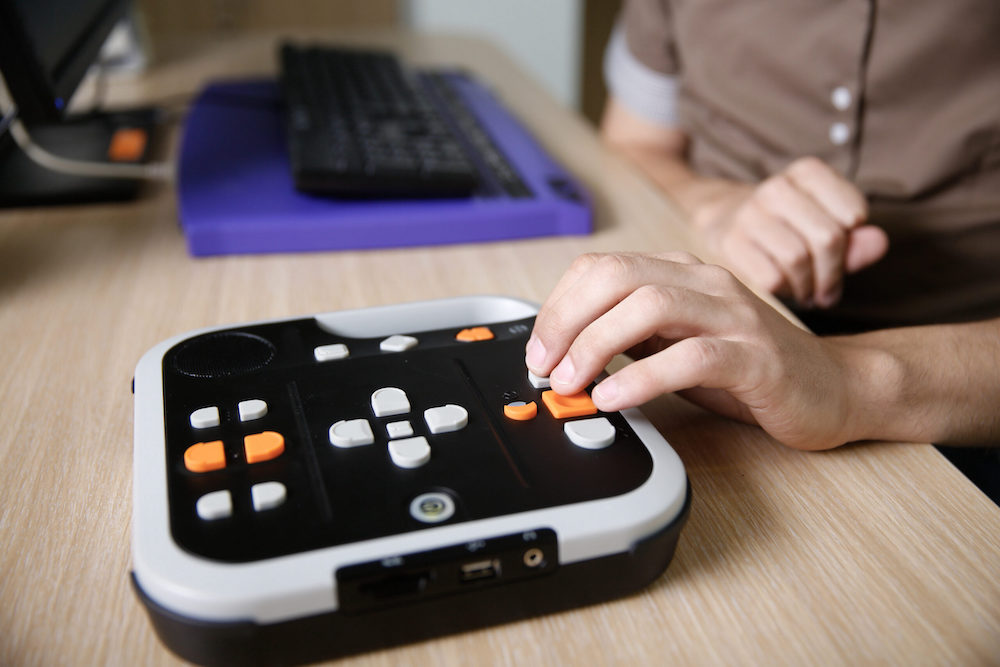By Naomi Leibowitz, AT Specialist
In honor of National Assistive Technology Awareness Month, we’d like to point out the importance of assistive technology and how it impacts everyone’s lives, not just people with disabilities.
What is Assistive Technology?
Assistive technology, or AT for short, is defined as “any item, piece of equipment, or product system, whether acquired commercially off the shelf, modified, or customized, that is used to increase, maintain, or improve functional capabilities of a person with a disability.”
AT is frequently misunderstood, and many people don’t know what classifies as AT. Many folks think AT is just an expensive device like a wheelchair but in reality, anything can be AT – it just depends on how it’s utilized. Simply speaking – AT is any tool used to simplify someone’s life. For example, if you are someone who has a mobility impairment and unable to get out of bed, you might ask Alexa to switch on the lights. In that situation, Alexa would become AT. Another example is if you need a few directions on how to go to a grocery store you might like to use GPS to assist with navigation. In that situation, GPS becomes AT. If you have a hearing impairment and turn on captions on your television, then the TV becomes AT. It is not AT if you only use these devices because you like and enjoy them. Any device may become AT if it removes a barrier for you.
How did AT come about?
Did you know that a lot of today’s mainstream technology was created for a person with a disability in mind? Take voice recognition, for example. Originally designed for people who couldn’t use a standard keyboard, it’s now being used by people to text on their phones. Another good example are ramps. Who hasn’t used a ramp instead of stairs when carrying groceries or pushing a stroller? The list goes on and on.
Another interesting tidbit of information. Did you know that AT dates all the way back to the 1800’s. The Audiophone Bone Conduction Amplifier was the earliest type of hearing aid that was not a cone in the ear. Instead, hearing was amplified through the conduction of sound through bone. Check out the timeline for AT. https://www.timetoast.com/timelines/history-of-assistive-technology
Do you want to learn more about AT?
Here is a short video to learn more about what AT is “Assistive Technology: Simple Said”
If you still have questions about AT and want to find out how Disability Rights NJ can help, visit our website at at4nj.org

